 New threat to international shipping in Red Sea
New threat to international shipping in Red Sea
Images have just surfaced (Twitter) of the type of mine laid by retreating Houthi rebels in Midi, Yemen. At the same time reports are coming out in Arab media that the Saudi Navy has disarmed some sea mines in the Red Sea near Mokha (Alarabiya). It is possible that the two sources are reporting the same mines. However the reported locations do not tie, being about 200 miles apart. Both are on the Red Sea and both ports have seen fighting in recent weeks.
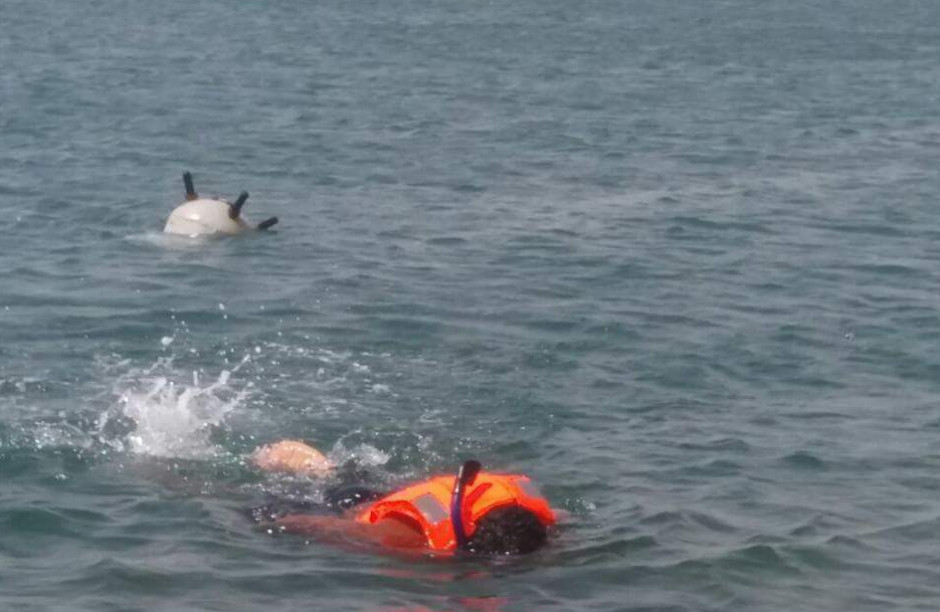
A brave man.
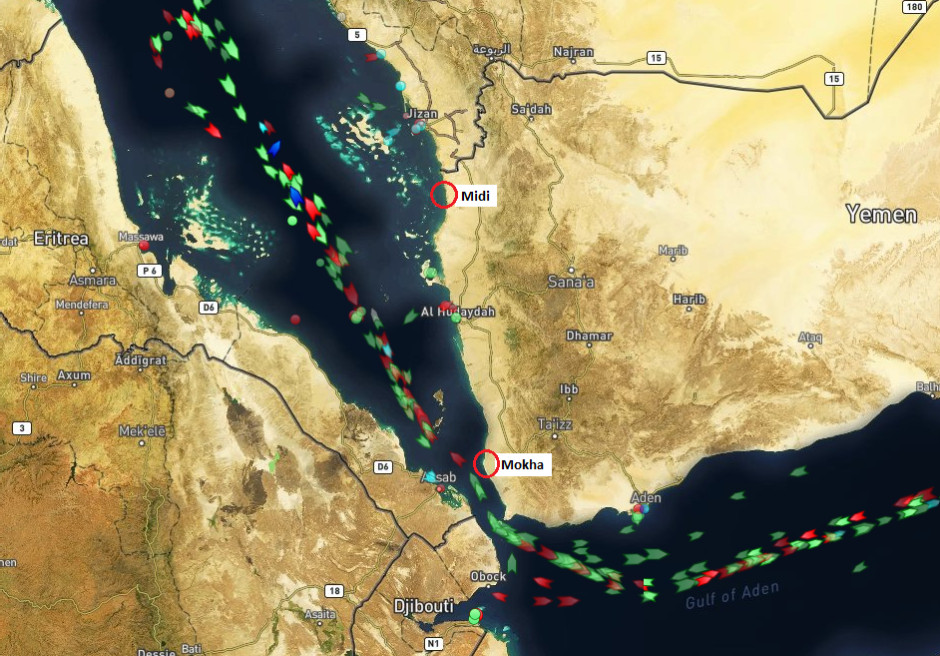
A real-time snapshot of Red Sea traffic from MarineTraffic.com, 25th March 2017
There is good evidence that mines sown in the Red Sea have a high likelihood of hitting some of the hundreds of large merchant ships which transit the area every month. Mines have previously been sown there in 1984 when 19 merchant vessels were hit over a period of months, although none were sunk because of the small charges used. The mines were credited to a Shia terrorist group Islamic Jihad who were aligned to Iran and were behind the 1983 bombing of the US Marine Corp barracks in Lebanon which killed 304 people (241 U.S. peacekeepers, 58 French peacekeepers and 6 civilians). Others blamed Iran directly, and the Egyptians blamed the Libyans. A single mine was detected, disarmed and recovered by British forces. It was found to be a Soviet export model manufactured no earlier than 1981. Ironically Soviet and Warsaw Pact vessels were among those hit. The Soviets must have known who they’d sold them to but they did not say. Although the mining is often seen in the context of the Iran-Iraq war, the finger appears to point to Colonel Gaddafi’s Libya as the culpable party.
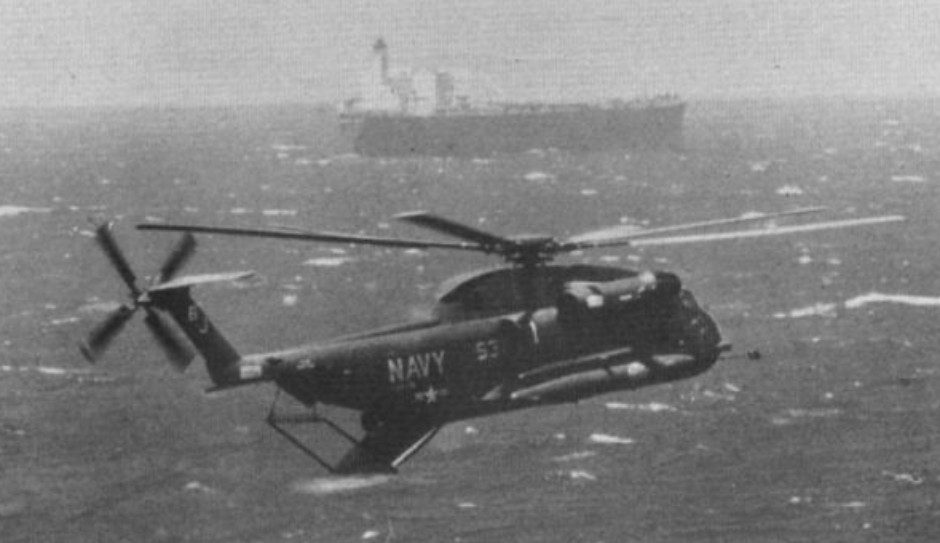
US Navy Sikorsky RH-53D Sea Stallion of Squadron HM-14 towing a sled to sweep for mines in the Red Sea in 1984. An international effort was launched to counter the mines with forces from US, UK, Italy, Netherlands and France based in Egypt.
While this event is not directly related, it does show that floating mines sown in the Red Sea are likely to hit a significant number of ships. The mines shown in the new photos at appears capable of sinking a merchant ship based on its size.
The Civil War in Yemen has presented several maritime threats in recent months. First the Houthi rebels attacked a UAE naval transport Swift with an anti-ship missile on 1st October 2016 (main Covert Shores article). They also targeted US Navy warships, and the US responded with Tomahawk cruise missile strikes in October 2016. Although this likely depleted Houthi anti-ship missile capabilities, it has not entirely deterred them. They rammed a Saudi frigate Al Madinah (702) with a remote controlled explosive boat on 30th Jan 2017. (main Covert Shores article)

The attack on Swift, left, and the attack on Al Madinah, right.
The new improvised weapons appear to be of the floating type with contact detonators. Although they appear basic, they are a significant threat to merchant shipping using the busy Red Sea shipping lanes.
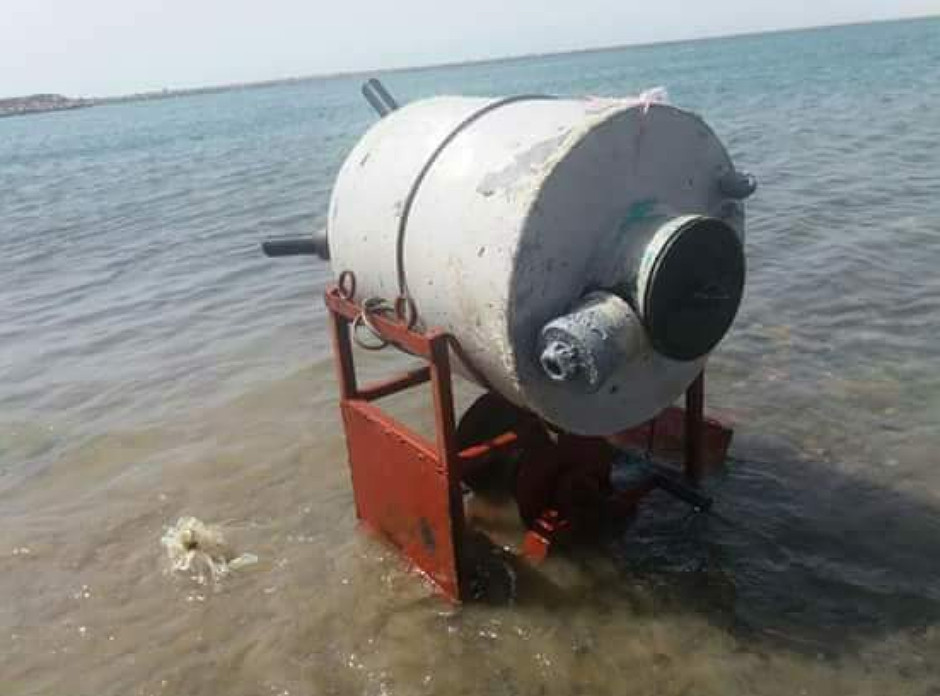
The ultimate book of Special Forces subs Covert Shores 2nd Edition is the ONLY world history of naval Special Forces, their missions and their specialist vehicles. SEALs, SBS, COMSUBIN, Sh-13, Spetsnaz, Kampfschwimmers, Commando Hubert, 4RR and many more.
Check it out on Amazon
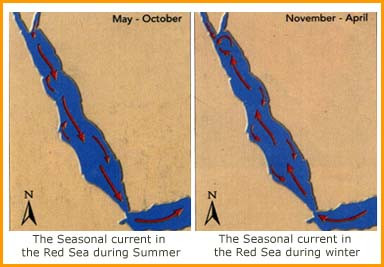 Whether the mines were released into the Red Sea in Midi near the Saudi border, or Mokha down near the entrance of the Red Sea, they still pose a serious threat to shipping. The winter currents in the Red Sea generally flow north towards the Suez Canal, so mines sown in Mokha would most likely drift into the central channel and follow the major shipping lane towards the Suez Canal area. Mines sown in Midi would likely be driven south along the coast by the Eastern Boundary Current which would keep them inshore and away from the busiest shipping lanes until further south where they might join the main northbound currents near Mokha, and from there follow the same pattern. If the mines were sown in Summer, the main current reverses and they might end up in the Gulf of Aden.
Whether the mines were released into the Red Sea in Midi near the Saudi border, or Mokha down near the entrance of the Red Sea, they still pose a serious threat to shipping. The winter currents in the Red Sea generally flow north towards the Suez Canal, so mines sown in Mokha would most likely drift into the central channel and follow the major shipping lane towards the Suez Canal area. Mines sown in Midi would likely be driven south along the coast by the Eastern Boundary Current which would keep them inshore and away from the busiest shipping lanes until further south where they might join the main northbound currents near Mokha, and from there follow the same pattern. If the mines were sown in Summer, the main current reverses and they might end up in the Gulf of Aden.
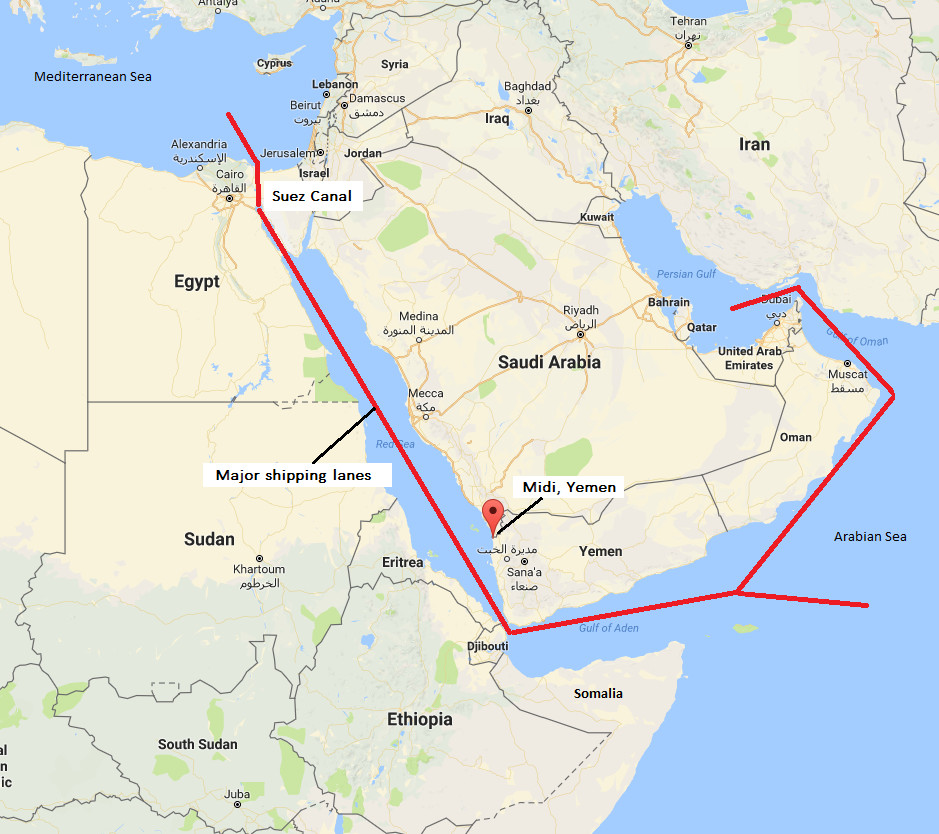
The mines are also significantly more serious than the improvised remote control ‘gas cylinder mines’ previously laid by AQAB in the same area:
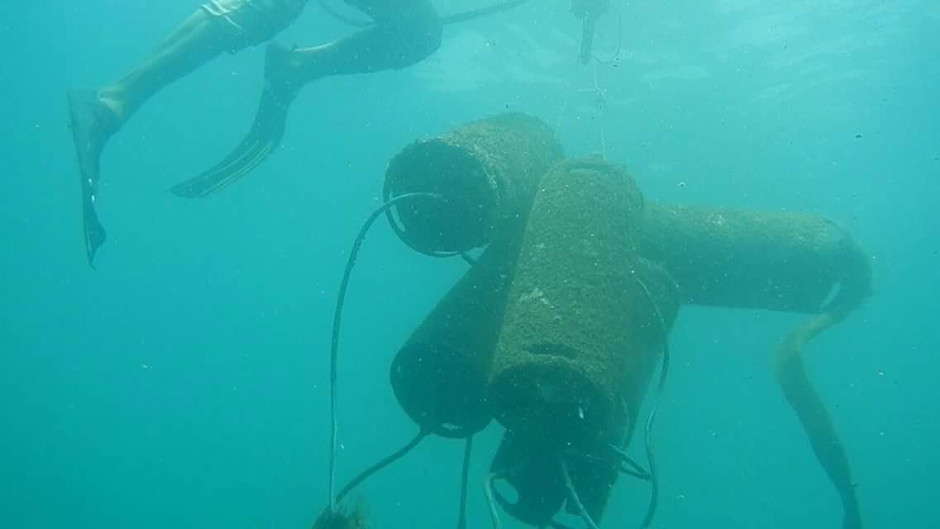
Main Covert Shores article: HERE.

